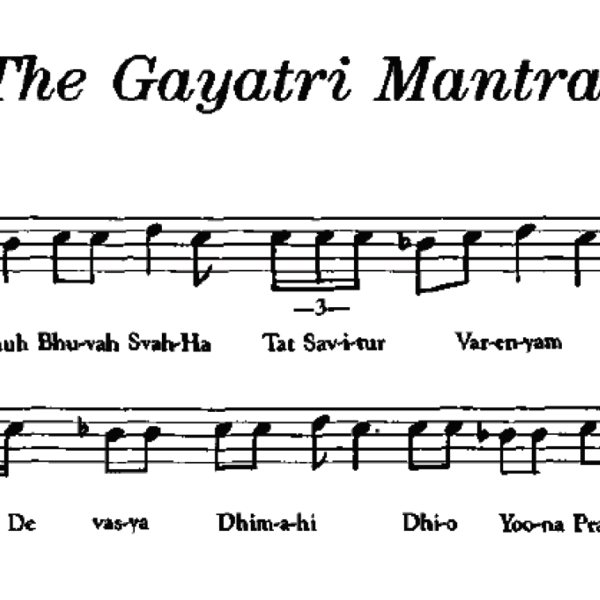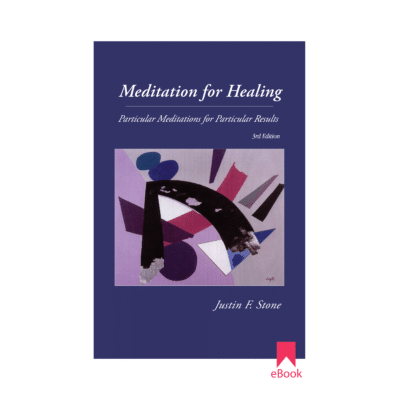
There are innumerable types of chanting, and the practice is very strong and beneficial, whether we chant in Latin (Gregorian Chants), in Sanskrit, in Chinese, in Tibetan or in Japanese. Generally we chant in groups, gaining strength from others in the assemblage. The author, when doing “walking chanting” of the Heart Sutra in Zen temples, has felt as though the right side of his head was splitting and coming off; and though painful, it was not an unpleasant sensation. It is not even important that we understand the semantic meaning of what we are chanting. We become the chanting, and therefore lose our ego-selves.
Tibetan monks – and laymen – not only chant the Om Mani Padme Hum (the Jewel in the Lotus), but they also incessantly turn prayer wheels that have this great Mantra written on them. Anyone who has heard the deep bass chanting in a Tibetan temple has probably been thrilled by it and, when it is supplemented by the sounds of the ultra-long bass trumpets, it becomes a subconscious force of great power.
In China there are those who daily chant the great Mantra of Avalokitesvara Bodhisattva (Essence of Compassion): Gate Gate Paragate Parasamgate Bodhi Svaha! The translation of this is “Gone, Gone, Gone to the other shore,” but the author feels that an explanation of the meaning of the words of a Mantra will only serve to weaken its power. It is not a rational statement, but an irresistible formula. In China and Japan they chant a transliteration of this Mantra, as the sounds do not fit into pronunciation suitable for Japanese and Chinese. It becomes: Gyate Gyate Hara Gyate Hara So Gyate Bodhi Svaha Ka Hanya Shin Gyo. In fact, the whole •Heart Sutra (Hridaya in India; Hannya Shin Gyo in Japanese and Chinese, meaning the kernel or essence of the prajna-paramita scriptures) is transliterated not translated, so it would be hard for anyone who had not studied it to grasp its profound meanings just by listening to it. When rendered in English it seems to lose some of its power, although certainly easier to understand.
In India, all holy men chant Om, or Aum as it is sometimes pronounced. This is called the pranava, the sound that is the substratum of all creation. All things supposedly reduce to this one great primordial sound.
The author has had the experience of coming out of deep meditation and hearing, underneath, a rumbling Om as the base of the meditation, though he was not using this Mantra as his meditative technique. Actually, no one living in the every day world – a householder as he is called in India – should chant Om, as it is a renunciate’s Mantra. If someone busy in the world were to chant Om regularly, it is felt that he would soon lose interest in his family, probably lose his job and his money, and would be drawn to the life of a recluse. Groups are to be cautioned against a prevalent practice of chanting Om.
Just as sacred in India, however, is the Gayatri Mantra, a hymn to the sun containing the sounds of Creation, Bhuh Bhuvah Svah (or Earth, Sky and Heaven). It is said that the Gayatri is appropriate for anybody, in any circumstances, and it is a delight to chant, whether it is sung, spoken or meditated on mentally. The words of the Gayatri are:
OM BHUH BHUVAH SVAH
TAT SAVITUR VARENYAM
BHARGO DEV ASYA DHIMAHI
DHIO YOO NAH PRACHODAYAT
When we sing, rather than chant, the Gayatri sounds like this:
Om Bhuh Bhu-vah Sva-ha Tat Sav-it-ur Var-en-yam Bhar-go De-vas-ya Dhi-ma-hi-i Dhi-o Yoo-nah Prach-o-da-yat

Group chanting of the Gayatri is very stirring. One of the author’s classes at the University of New Mexico used to meet a half hour early, with rhythm instruments, and chant-sing the Gayatri into the sunset.
By ourselves it is good to place the Mantra (all four lines) in the third eye spot of the forehead, with eyes closed, and to sing it mentally. Once the mind gets used to it, and builds the habit energy (vasana) of the Gayatri, the practitioner will begin to experience deep meditation with all its rest and joy.
Those who chant the Gayatri regularly appear to throw off worries and begin to act joyously. It seems to be good therapy. Often we find ourselves chanting it – orally or mentally – in time to our footsteps while walking. The Gayatri, perhaps irrationally, seems to offer us joy, and habitual joy is healing.
Just as the Sufis chant yahoo, many religions in Japan use the sounds from the Lotus Sutra, the Namu Myoho Renge Kyo. Nichiren Buddhism pioneered this chanting in Japan (the modern-day Soka Gakkai religion is derived from the Nichiren). Helped by the power of its chanting which, with belief in the mystic Mandala, or Gohozon, fulfills all desires, Nichiren has become one of the fastest growing faiths in the United States and in the world.
Much has been said in this book about the Amida Buddha sect of Japanese Buddhism. It is very touching to watch whole families chanting the Nembutsu, Namu Amida Butsu in unison, and the faces show the intense devotion that springs from it. There are many Shin Buddhist churches in the United States, so Americans who are attracted by this simple but profound practice will easily find others with whom to chant.
CONCLUSION
There are innumerable chants and many ways to utter them. One who chants regularly with a group will tend to lose his self-consciousness, and selflessness is the beginning of health. Religious chanting is a robust practice and easy to do. The author has often heard the touching chanting at Tenrikyo morning and evening services in Japan, while the adherents do the simple dance movements that have much in common with moving meditation. Tenrikyo promises its women painless childbirth, so perhaps there is great strength in their chanting.
One of the weaknesses of the Japanese Healing Church (Sekai Kyusei Kyo) is the fact that they use Christian hymns and Shinto chants; they have not yet developed their own focus. However, the Shinto prayer they chant, the Taka Amahara, has great power. One can find this church under the name Church of World Messianity in Los Angeles and, whether one goes there for the healing power of the Johrei practice or to chant the Taka Amahara with others, he will find strong healing vibrations.
Chanting is about the easiest of all meditative practices. In the beginning it is not actually true meditation, but when one closes his eyes mentally, it becomes deep and profound meditation. With many this chanting goes on in their hearts all the time. Meaningful chanting is great therapy.

